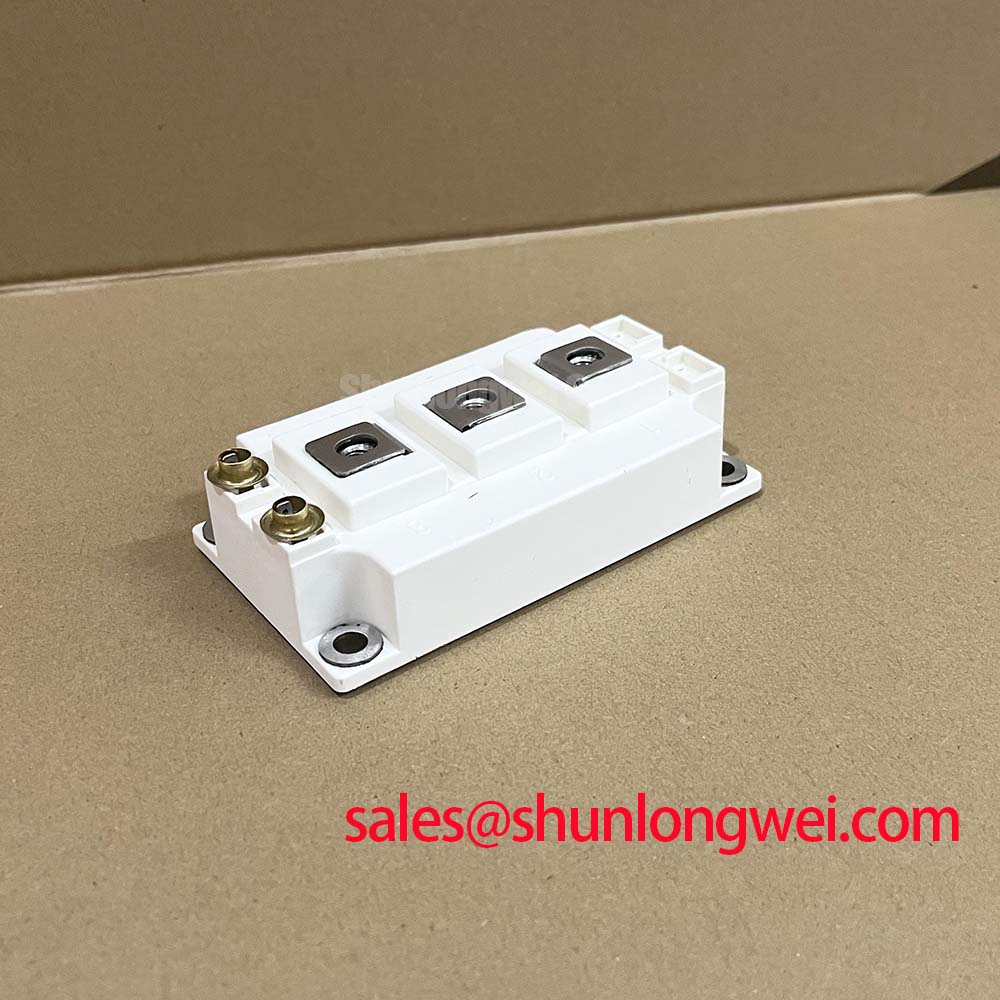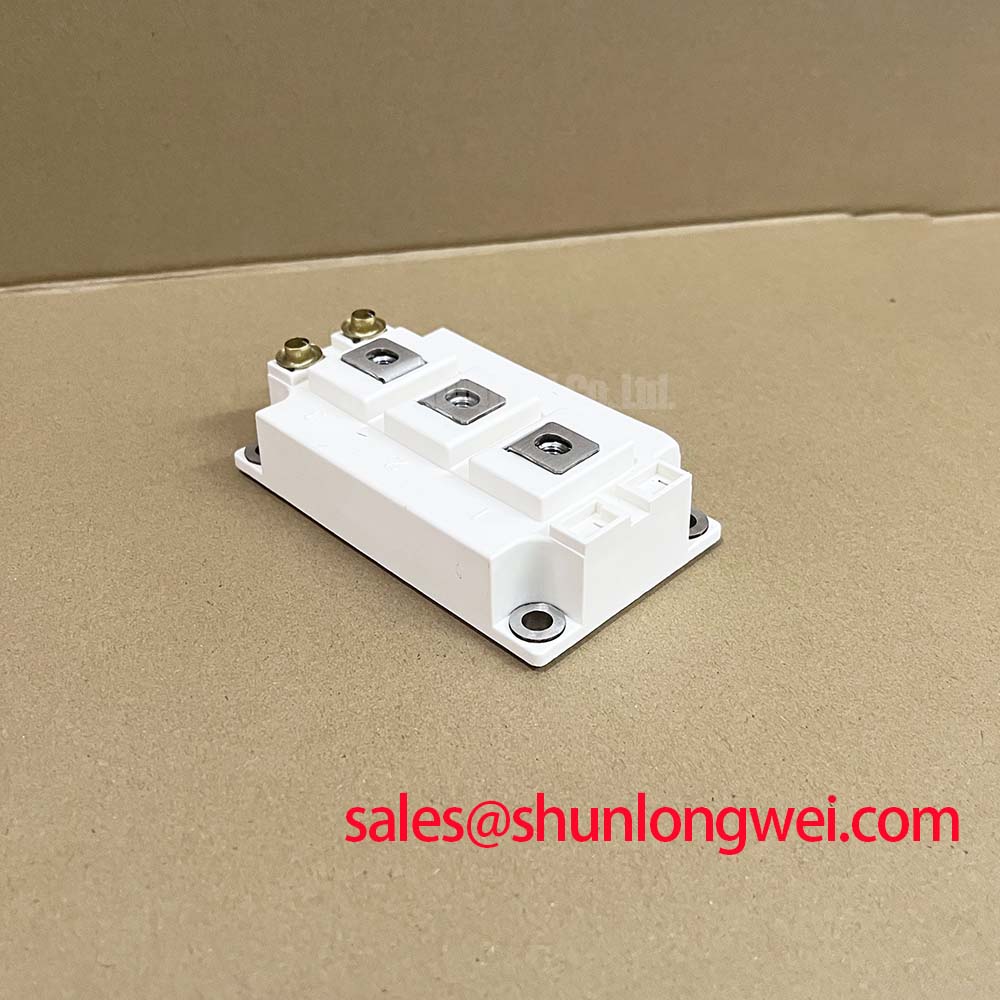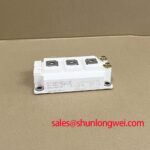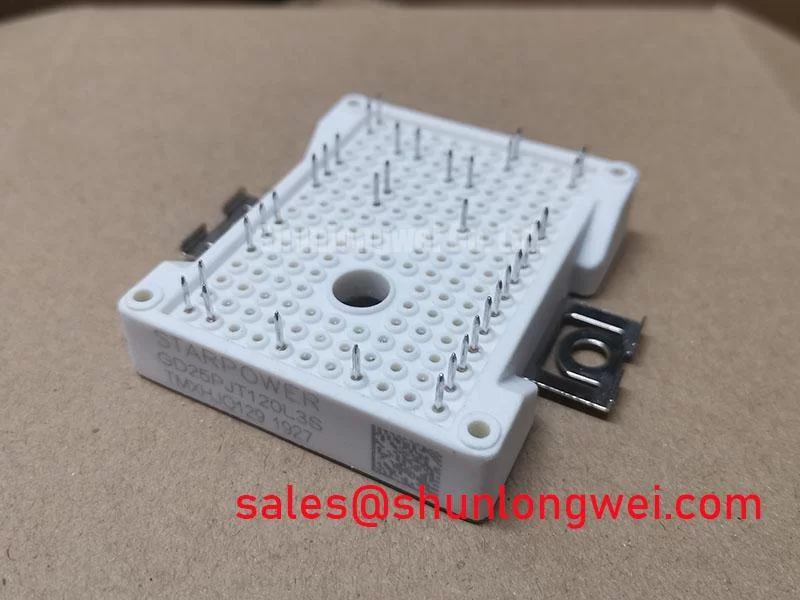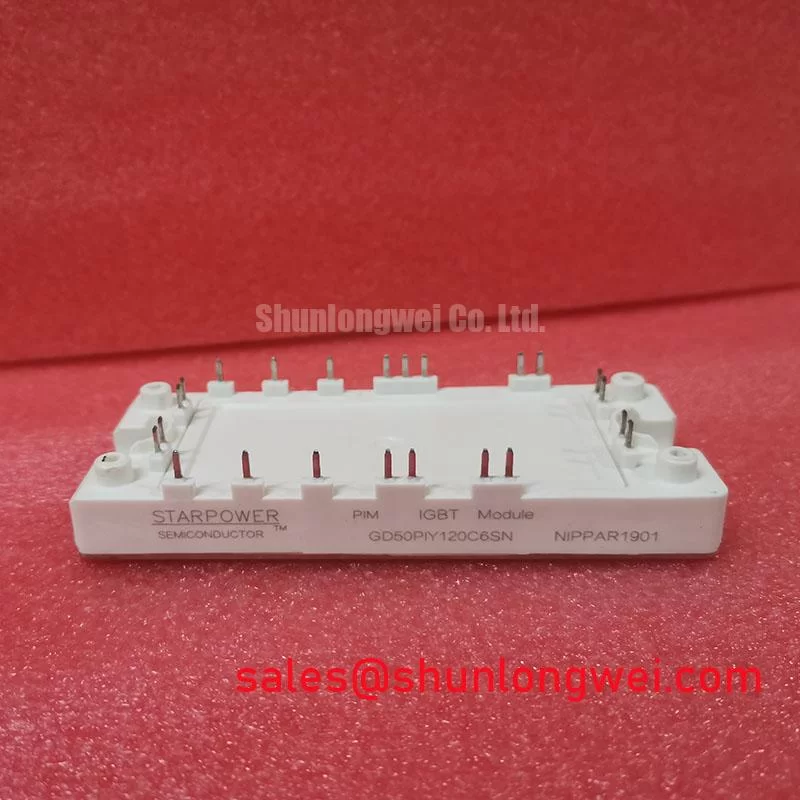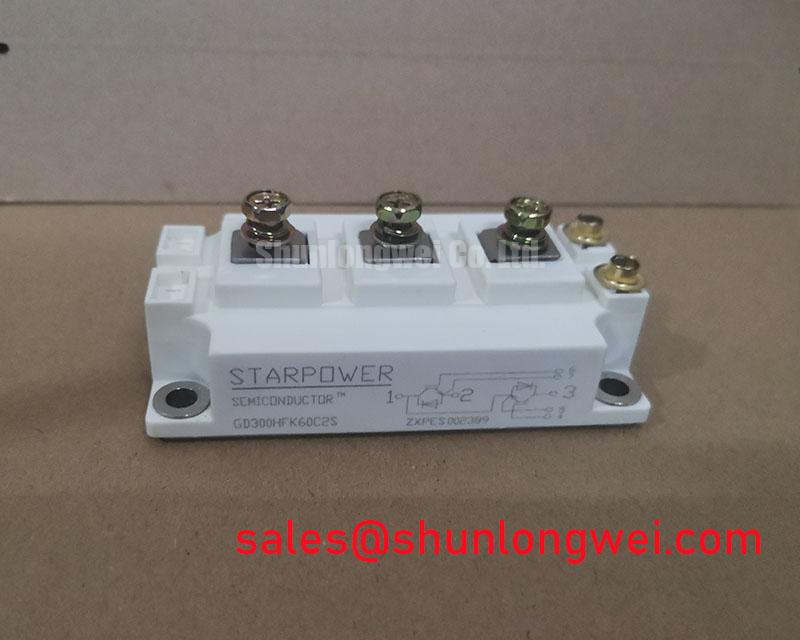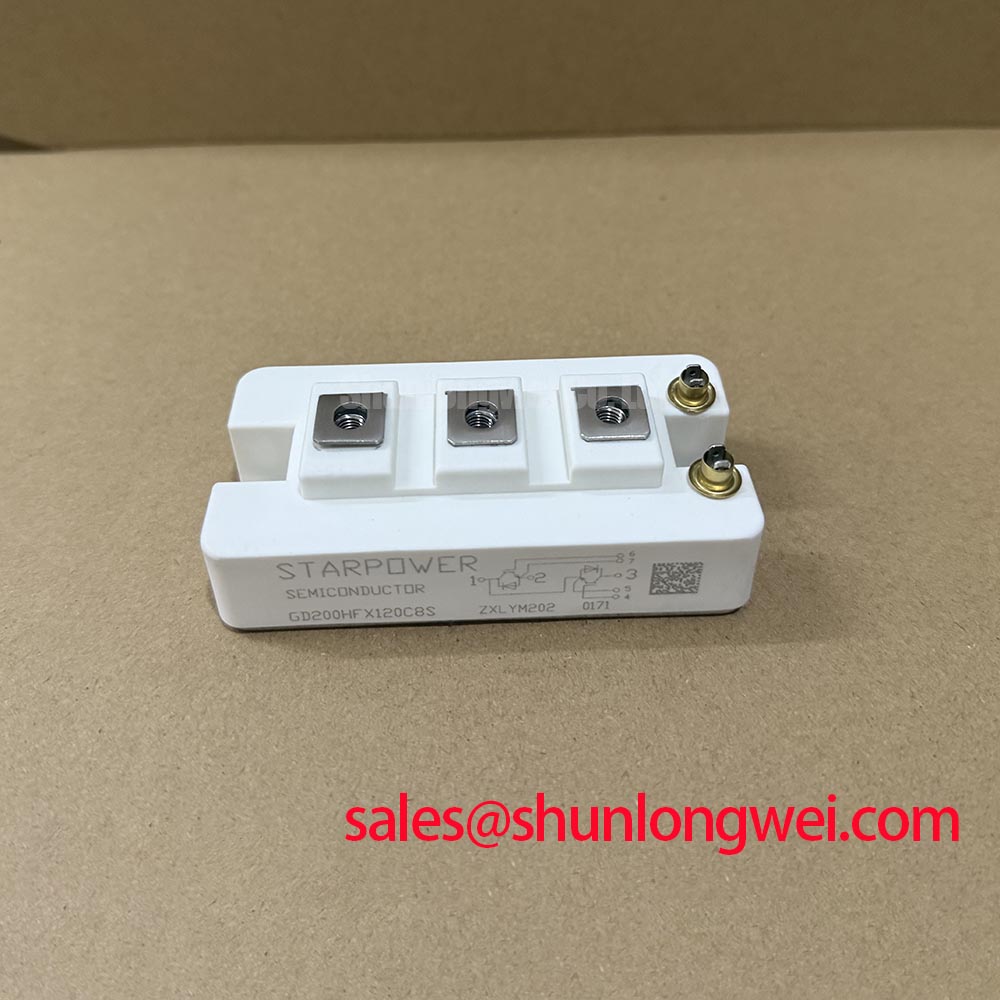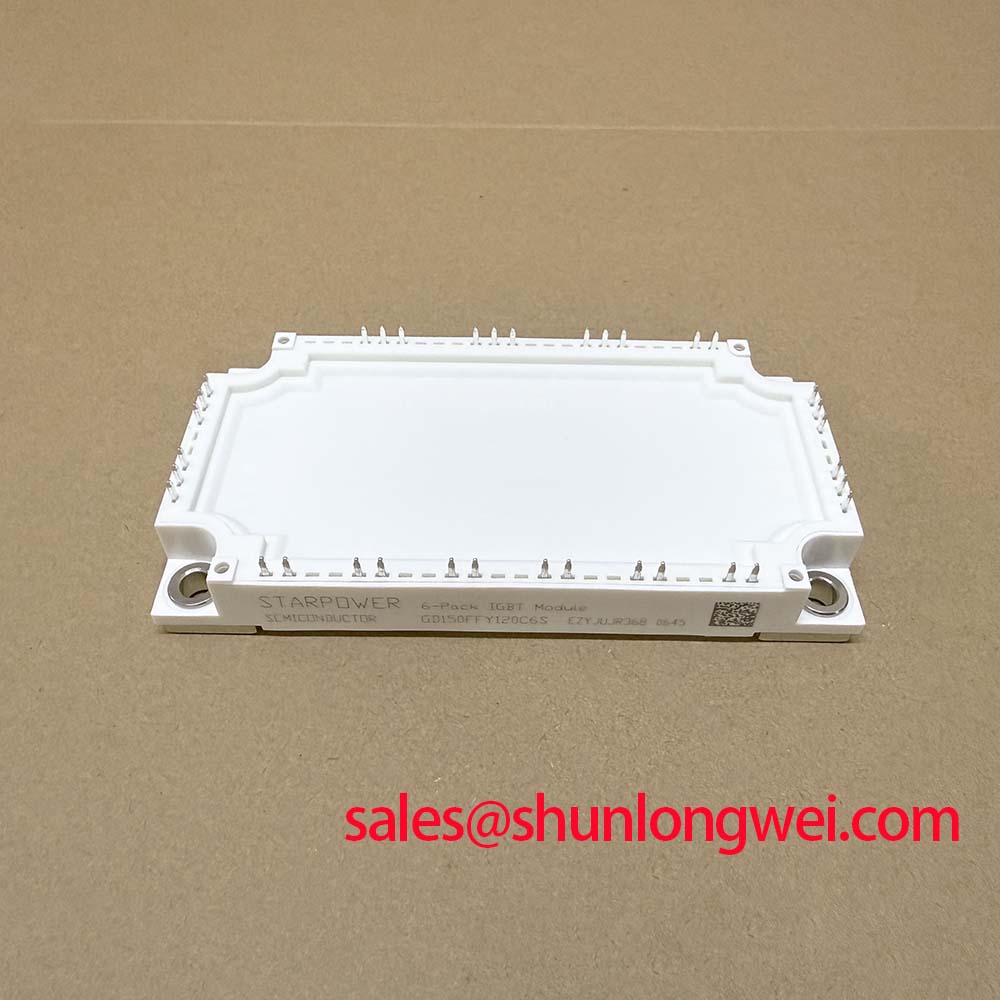Content last revised on November 19, 2025
GD450HFX120C2S: Engineering Analysis of a 1200V, 450A Half-Bridge IGBT Module
Engineered for High Thermal Stability and Reliability in Demanding Power Systems
The Starpower GD450HFX120C2S is a high-power half-bridge IGBT module designed for exceptional thermal performance and long-term reliability in high-stress power conversion applications. With its core specifications of 1200V | 450A | Tj(max) 175°C, it provides a robust foundation for building efficient and durable power stages. Key engineering benefits include a high operational temperature ceiling for enhanced design margin and low conduction losses for improved system efficiency. This module directly addresses the critical need for thermally stable switching in high-power motor drives and uninterruptible power supplies. For industrial drive systems prioritizing operational resilience under heavy loads, the GD450HFX120C2S's high maximum junction temperature makes it a strategically sound choice.
Application Scenarios & Value
Achieving System-Level Benefits in High-Current Motor Drives and UPS
The GD450HFX120C2S is engineered for high-power applications where efficient and reliable switching are non-negotiable. Its primary specifications make it a strong candidate for the core switching element in a variety of demanding power electronics systems.
- Variable Frequency Drives (VFDs): In large industrial VFDs, managing thermal stress during motor acceleration and under continuous heavy load is a primary engineering challenge. The GD450HFX120C2S's high maximum junction temperature of 175°C provides a crucial safety margin, preventing premature failure and enhancing the drive's lifetime. This high thermal ceiling allows for more compact heatsink designs or higher ambient operating temperatures without compromising reliability.
- Uninterruptible Power Supplies (UPS): For large-scale UPS systems protecting data centers or industrial processes, reliability is paramount. The module's low VCE(sat) of 1.70V (typical) directly translates to lower conduction losses. This reduction in wasted heat is critical, as it improves overall UPS efficiency (a key factor in total cost of ownership) and reduces the thermal load on cooling systems, thereby increasing the reliability of the entire power infrastructure.
- Industrial Inverters: In applications like industrial welding or solar inverters, the device's robust 10μs short-circuit withstand time provides essential protection against catastrophic failure during fault conditions, such as a shorted output.
While this module is well-suited for 450A designs, systems requiring lower current handling may consider the related GD300HFL120C2S, which offers a 300A rating within a similar voltage class.
Key Parameter Overview
Specifications for Robust Thermal and Electrical Design
The technical specifications of the GD450HFX120C2S underscore its suitability for high-reliability power systems. The parameters are grouped by function to facilitate engineering evaluation for specific aspects of a design, such as thermal management and electrical stress.
| Absolute Maximum Ratings (Tc=25°C unless otherwise noted) | |||
|---|---|---|---|
| Parameter | Symbol | Value | Unit |
| Collector-Emitter Voltage | VCES | 1200 | V |
| Continuous Collector Current (@ TC=100°C) | IC | 450 | A |
| Pulsed Collector Current (tp=1ms) | ICM | 900 | A |
| Gate-Emitter Voltage | VGES | ±20 | V |
| Maximum Junction Temperature | Tvjmax | 175 | °C |
| Isolation Voltage (RMS, f=50Hz, t=1min) | VISO | 4000 | V |
| IGBT Characteristics (Tvj=25°C unless otherwise noted) | |||
| Collector-Emitter Saturation Voltage (IC=450A, VGE=15V) | VCE(sat) | 1.70 (Typ.) | V |
| Short Circuit Withstand Time (VGE≤15V, VCC=600V) | tsc | 10 | µs |
| Thermal Characteristics | |||
| Thermal Resistance, Junction to Case (per IGBT) | Rth(j-c) | 0.054 | °C/W |
Note: The parameters listed above are a selection of key specifications. They do not represent the complete component data.
Download the GD450HFX120C2S datasheet for detailed specifications and performance curves.
Technical Deep Dive
Analyzing the Impact of DBC and Trench Gate Technology on Reliability
The long-term reliability of the GD450HFX120C2S is not merely a function of its voltage and current ratings but is deeply rooted in its material and semiconductor design. Two key features highlighted in the datasheet—Direct Bonded Copper (DBC) technology and Trench IGBT technology—are central to its performance under thermal stress.
The use of an isolated copper baseplate with DBC technology is critical for thermal management. What does DBC provide? It creates a strong, thermally efficient bond between the ceramic insulator and the copper layers. This construction minimizes the thermal resistance from the semiconductor junction to the case (Rth(j-c)). For the design engineer, a low Rth(j-c) of 0.054 °C/W means heat is extracted more effectively from the IGBT and diode chips. This is analogous to having a wider, less obstructed pipeline for heat to escape, which keeps the junction temperature lower for a given power loss, directly improving both the module's lifespan and its SOA (Safe Operating Area).
Internally, the module employs low VCE(sat) Trench IGBT technology. This advanced gate structure increases the channel density on the silicon chip compared to older planar designs. Think of it as creating more lanes on a highway; it allows more current to flow through the same area with less "traffic congestion," which manifests as a lower voltage drop (VCE(sat)). This inherent efficiency is a cornerstone of modern IGBT Module design, reducing the amount of heat generated in the first place and simplifying the overall thermal design of the power converter.
Frequently Asked Questions (FAQ)
What is the primary engineering benefit of the 175°C maximum junction temperature?
The primary benefit is an increased thermal design margin. This allows the module to operate reliably in higher ambient temperatures or under heavier load cycling conditions without exceeding its limits. It gives engineers more flexibility in heatsink selection and system enclosure design, potentially reducing overall system size and cost.
How does the positive temperature coefficient of VCE(sat) benefit system design?
A positive temperature coefficient means that as the IGBT chip heats up, its on-state resistance (and thus VCE(sat)) increases slightly. This characteristic is crucial for paralleling multiple IGBT modules. It helps ensure that current is shared evenly among the modules, as any chip that starts to carry more current will heat up, increase its resistance, and naturally steer current to the other, cooler devices, preventing thermal runaway.
What does the 4000V isolation voltage rating signify for practical applications?
The 4000V isolation rating ensures robust electrical separation between the live power circuit on the module and the grounded heatsink it is mounted on. This high isolation capability is a critical safety feature, preventing electrical shock hazards and ensuring compliance with industrial safety standards like IEC 61800-5-1, which is essential for equipment connected to public power grids.
System Design & Integration
For engineers integrating the GD450HFX120C2S, the focus should be on maximizing its thermal and electrical performance. A properly designed gate drive circuit is essential to achieve the specified switching characteristics and to protect the module. Furthermore, utilizing a high-quality thermal interface material (TIM) between the module's copper baseplate and the heatsink is critical to exploit its low thermal resistance. By addressing these integration details, designers can fully leverage the module's capabilities to build a highly reliable and efficient power conversion system.




